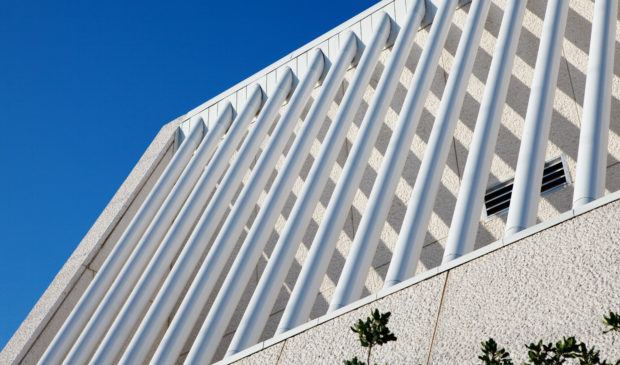New master plan to pave the way for MACC expansion
Friday, June 23, 2017 by
Chad Swiatecki Few could have imagined when the Emma S. Barrientos Mexican American Cultural Center was originally proposed in the late 1990s that the area around the center would look anything like it does in 2017. When the MACC was completed in 2007, it opened just after the quiet Rainey Street residential area was rezoned to make way for the bustling mix of bars, clubs and high-rise buildings that have taken over the area in the years since.
That change, along with classes and cultural offerings that are typically maxed out for attendance, have prompted local leaders to begin work on a new master plan for the center. That plan is expected to be complete and presented to City Council early next year, and will lay the foundation for an expected fundraising effort or bond issue to pay for what looks to be an ambitious expansion.
A community open house and forum on Saturday was the first event to kick off the master plan process, and resulted in hundreds of responses and recommendations that center leaders and consultants will use in the months ahead. A series of focus groups with artists, community members and other stakeholder groups are also ongoing, and an online survey is the preferred way to offer input through next month.
Other open houses in the fall and December will update the public on the process, with a final design scheduled for the December session.
Jaime Beaman, principal at the CasaBella Architects firm that is helping to lead the master plan process, said the center’s 10 years of near-capacity use have affirmed its popularity with the community. The new plan will look at how to expand its cultural offerings and grow physically from its current 30,000 square feet of building and 22,000-square-foot outdoor plaza.
With two adjacent lots donated to the center in recent years, Beaman said there is a chance to completely revamp how the MACC presents itself to the public, both from Rainey Street and from the nearby hike and bike trail.
“The neighborhood has completely changed, the Waller Creek Conservancy will soon be a major neighbor, and so it’s time to hear from the public what they would like to see happen in terms of fixes and modification,” Beaman said. “For me the building’s great entrance is critical, because we can create an entry point that gives you more of an idea of what’s going on, to draw people in.”
Figuring out how the center will interact with the neighborhood’s still-growing population will be an important piece of the master plan puzzle. A recently completed mobility study of the area predicted that planned development projects could bring up to four times as many cars to Rainey Street, with developers expected to pay for as much as $13.4 million in transportation improvements in the area.
A related concern comes from Latino and Mexican-American groups who say potential visitors living in Central and North Austin have few transportation options to let them visit the center and take part in cultural activities.
Kim McKnight, a cultural resources management staffer for the Austin Parks and Recreation Department, said transportation issues have grown for the center’s leaders, with community members working to arrange bus trips from North Austin for major events.
McKnight also said it is too early in the process to know how much money will be needed for the center’s expansion or how that money would be raised. She said one option would be generating income from on-site gift shops and restaurants, with an eventual bond issue also possible.
“With classes at capacity and challenges with the space, it’s time to listen to the public and work with partners in the community to address what the center needs next,” she said. “It’s an incredible chance to look at its place in the community, and how we can facilitate new connections throughout the neighborhood.”
Photo by Beth Wilson made available through a Creative Commons license.
The Austin Monitor’s work is made possible by donations from the community. Though our reporting covers donors from time to time, we are careful to keep business and editorial efforts separate while maintaining transparency. A complete list of donors is available here, and our code of ethics is explained here.
You're a community leader
And we’re honored you look to us for serious, in-depth news. You know a strong community needs local and dedicated watchdog reporting. We’re here for you and that won’t change. Now will you take the powerful next step and support our nonprofit news organization?









